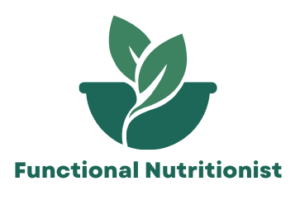Navigating Micronutrient Deficiency in the Desert Sands of Arizona
In the sun-drenched landscapes of Arizona, where the cacti stand tall and proud, an invisible desert dweller lurks in the diets of many—micronutrient deficiency. Picture this: you’re downing sun tea on your porch, feeling as invincible as a cowboy, and a functional nutritionist taps you on the back saying, “Howdy! Your vitamins need help!” It doesn’t seem to make sense, right? After all, the land of eternal sunshine should breed radiance and health. Yet, the reality is that many Arizonans face a silent struggle with essential nutrients.

Perhaps it’s the heat that makes veggies wilt before they reach your plate. Or maybe it’s that, despite the Grand Canyon’s grandeur, grocery runs can resemble an odyssey. Surprisingly, vitamin D, renowned as the “sunshine vitamin,” often falls short in folks here.
But sun exposure isn’t always the vitamin D enabler, especially when you’re slathering on SPF 50 like it’s frosting on a cake.
Most people in Arizona don’t get enough magnesium. This is the unsung hero that moves your muscles and keeps your heartbeat going. But pick up your average Sonoran feast, and this mineral goes somewhere and hides. Tacos, salsa, squeeze of lime, mouth explosion! But where is the magnesium in that party? It is rarer than a July rainstorm.
To local plants, like amaranth, that once were the norm and mainstay of ancient diets, today these plants remain curiosities and oddities to modern tastes and Tempe palates. Such greens pack a punch full of nutrition, and instead of this being another expensive, weird smoothie challenge-just thinking kale, avocado, and others-these hearty greens could be elevated in meals for locals.
Iron, dear iron, seems to slip away too. Especially in women and children, iron deficiency hits like an unexpected tumbleweed. The invigorating iron punch from lean meats or spinach often gets buried under layers of convenience foods. Picture it: folks standing at local farmers’ markets, buying honey while missing the iron-rich jackpot that is beef liver just a stall away. Perhaps this nutrient just needs a better PR agent to jazz up its appeal?
Now, let’s chat a bit lighter. Imagine Pete, the friendly neighborhood Arizonan, trying to make healthier choices. One day at a health fair, he looks bewildered at quinoa samples. “What’s wrong with plain ol’ rice?” he mutters. Yet, inspired, he tries swapping his hobbies. He embraces hiking, not just for the views, but for the thrill of walking the vibrant terrain. And there, on that trail, munching on trail mix fortified with pumpkin seeds-a magnesium marvel-he has his epiphany. “Nuts to nutrient neglect!” Pete exclaims, determined to tackle deficiencies more actively.
Community initiatives start to shine as a beacon in this narrative. Farmers markets bring color and vibrancy, sprouting not just veggies but opportunities. Workshops pop up like desert wildflowers, teaching simple nutrition swaps and offering spins on beloved recipes. Grandma’s tortillas? Try them with fortified flour. Aunt Rosa’s chili?
On a broader level, how do Arizonans win this nutrient rodeo? It’s about falling back in love with whole foods. It’s asking that enterprising chef, “What’s in your version of that dish?” It’s listening to the desert itself, each plant and herb telling stories of nutrition just waiting to be rediscovered. And maybe, it’s about putting down the soda and picking up a prickly pear smoothie instead, full of antioxidants and spunk, just like the people here.
How Malnutrition Impacts Mental Health in Arizona
Picture this: You’re in Arizona, the sun is high in the sky, the cacti stand tall, and the burgers smell juicy. But behind the bright desert scenery, there’s an unspoken battle. More and more people face the hidden foe of malnutrition. Not everyone is sitting around sipping on green smoothies. Many are genuinely striving for better health but are falling short in crucial nutrients. Let me tell you, a functional nutritionist could be your new best friend in decoding this dilemma.
Science proves that when our diets are deprived, our brains just aren’t happy campers. You’ve seen a toddler when his toy is out of reach; that’s your brain sans nutrients. It gets cranky, irritable, and maybe just a little irrational.
In our slice of the West, reports have indicated that a large number of Arizonans face a struggle with access to wholesome food choices. Let’s face it-fresh fruits and veggies sometimes seem more elusive than rain in Tucson. This shortage isn’t just a pinch in the wallet.
Your brain, believe it or not, needs its vitamins just as much as your grandma’s gardenias need water.
Take, for instance, omega-3 fatty acids-those little nutrients with the superhero cape. They are necessary for brain health. Without them, you will be plagued by depression and mental dullness. That’s basically what your brain looks like without those types of essential fats.
John, who hailed from Arizona, once shared his story. He joked, “I lived on burritos and soda, thinking I was indestructible.” Then life sucker-punched him like an unexpected monsoon. Anxiety clouds gathered, and motivation evaporated faster than a puddle in Phoenix. It wasn’t until he visited a nutritionist that John finally learned that simple truth: his lack of essential nutrients was feeding his mental battles.
Now, vitamins and minerals may not sound very rock ‘n’ roll, but they keep the band’s rhythm. Take zinc, for example. Extremely important for clarity of thought, while magnesium keeps mood in check. Without them, it would be like trying to play the guitar with no strings: absence makes for a silent tune.
Let alone folate-the unsung helper for mood swings. Low levels send mood on a rollercoaster ride, leaving even the veterans of thrill-seeking dizzy.
It is here that nutrition education programs are blooming like desert flowers in Arizona’s sprawling urban areas. Through the campaigns, the raw fact is brought to light: understanding and managing dietary input has a direct link with mental wellbeing. State programs and local organizations started joining the bandwagon, raising awareness about the immense importance of what ends on our plates.
Take Maria, a Phoenix schoolteacher who changed the game on snack time in her classroom. Instead of cookies, she brought along mixed nuts and fruit sliced with an artistic touch. Her sensual approach is meant to spark her students’ interest in healthy eating. The result? A host of happy, attentive children who are as bouncy as beans in a jumping race. Chalk one up for simple dietary changes!
So the next time you’re pondering a meal and stopping at a local farmer’s market or trading stories with Arizona neighbors over a backyard barbecue, remember: food can be both a blessing and a curse. It wields as much power over your gut as over your mind. Choose wisely, not only for your stomach but for those thoughts that simmer in your head.








